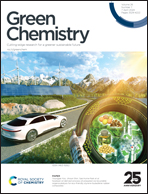Enhanced lithium-ion conductivity and interficial stability of Li-IL@Fe-BDC composite polymer electrolytes for solid-state lithium metal batteries†
Abstract
Due to the inherent limitations of commercial liquid electrolytes, such as flammability, volatility, leakage, and their inability to effectively inhibit the growth of lithium dendrites, the lithium battery research community has shifted its attention towards advancing solid-state electrolytes. Notably, polyethylene oxide (PEO) has emerged as a respected solid-state electrolyte, but its ionic conductivity still exhibits a relatively modest level. In this study, we fabricated the Li-IL@Fe-BDC composite by integrating lithium salt-loaded ionic liquids (Li-ILs) into cost-effective and environmentally friendly Fe-based MOF frameworks (Fe-BDC). The resulting composite filler was then incorporated into a PEO matrix, yielding flexible composite polymer electrolytes (CPEs) with a “brick and mortar” hybrid structure. This unique arrangement enhances the mechanical strength of CPEs, providing dispersed sites and multi-ion transport channels. Consequently, it achieves a high conductivity of approximately 4.9 × 10−4 S cm−1, an extended electrochemical window of about 4.8 V, and a notable Li+ transference number of ∼0.6. Moreover, the composite demonstrates excellent interfacial compatibility with the Li metal and remarkable resistance against dendrite growth during plating/stripping cycles, sustaining over 800 hours at a current density of 0.2 mA cm−2. Furthermore, LiFePO4/CPEs/Li cells exhibit outstanding capacity retention, reaching as high as 95.8% after 700 cycles at 1 C. These exceptional electrochemical performances can be attributed to the distinctive characteristics of the Li-IL@Fe-BDC composite filler, which provides multiple pathways for lithium ion migration and enhances interfacial stability. Consequently, this study unveils a promising approach for achieving high Li-ion conductivity and interfacial stability in CPEs, offering valuable insights for future breakthroughs in this burgeoning field with a focus on green chemistry principles.



 Please wait while we load your content...
Please wait while we load your content...